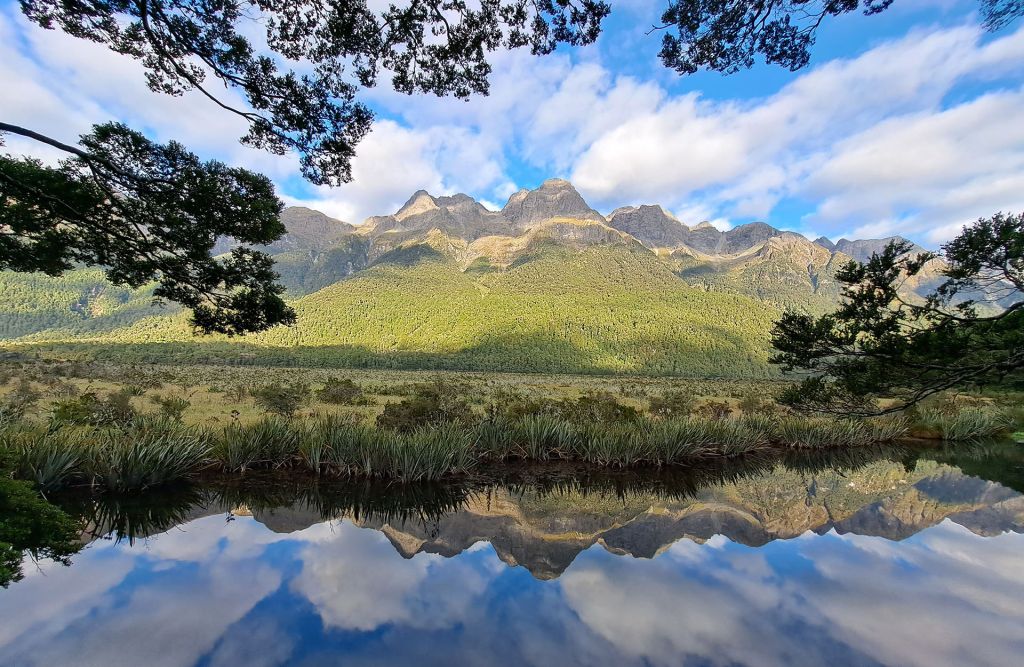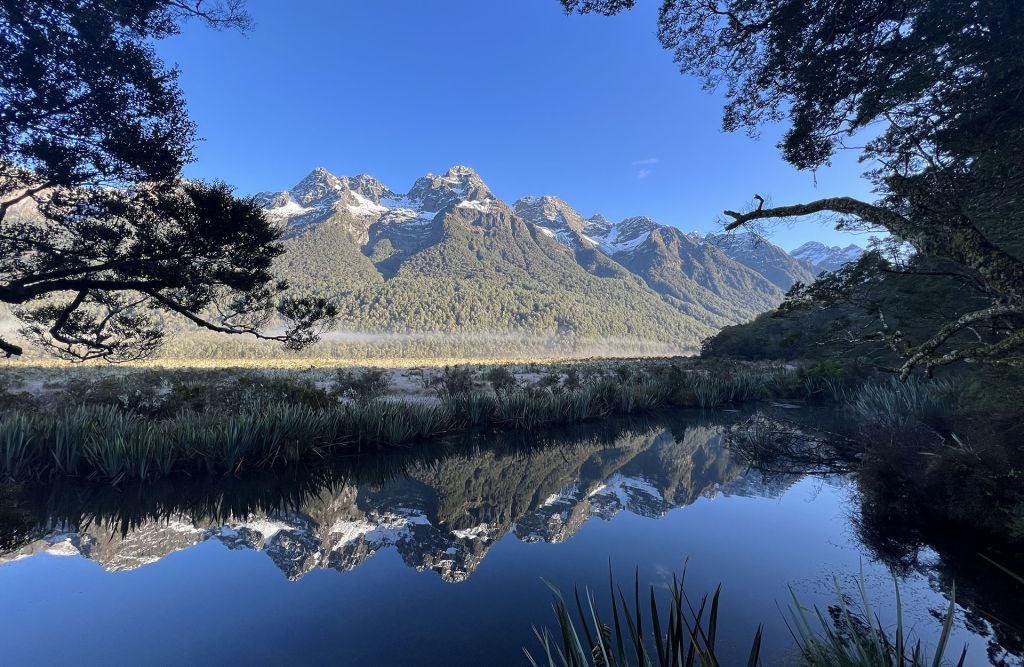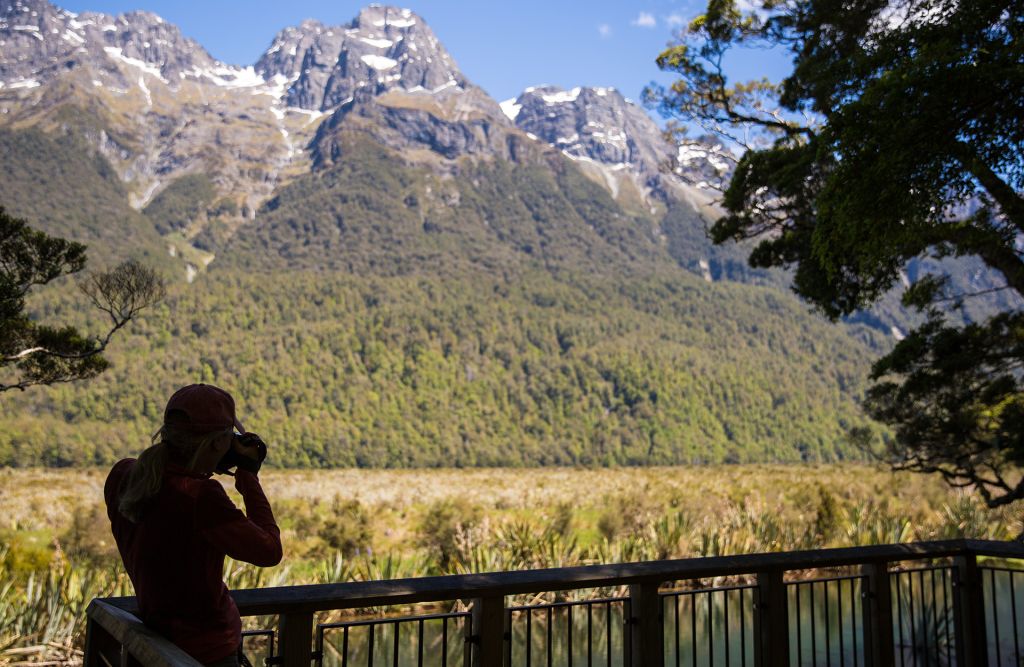Mirror Lakes
One of the highlights of the Milford Road, the Mirror Lakes are world famous for their beauty and the way they reflect their surrounding scenery. You’ll find the Mirror Lakes within the Eglinton Valley.
Stunningly scenic, on a calm day they provide breathtaking reflections of the Earl mountain ranges opposite. Thousands of tourists visit the Mirror Lakes every year in search of the perfect photo op. However, they’re also a habitat for many animals, including some of our rarest birds.
New Zealand’s smallest duck, the scaup or pāpango, live in the Mirror Lakes and other Eglinton Valley waterways, as do the grey duck or pārera. Under the water you’ll find long-finned native eels, as well as brown and rainbow trout which were introduced in the 1800s.


The Mirror Lakes were created when the Eglinton River shifted its course long ago, leaving these two river bends behind to form what is known as ‘oxbow’ lakes. Together with the Eglinton River they form part of the largest system of inland waterways in New Zealand, stretching (almost unbroken) from Martins Bay/Kotuku in the north to Te Wawae Bay on the south coast.
To see the Mirror Lakes, you’ll follow the signs from the roadside carpark and take a short walk along a well-maintained boardwalk through native forest. The walk is about 400m (437 yards) long. If you’re visiting the Mirror Lakes on a Milford Sound day tour, listen to your driver when they tell you what time to return to the bus. The lakes are so beautiful it’s very easy to stay too long taking “just one more photo”!
Taking photos at the Mirror Lakes
While your time travelling to Milford Sound will be unforgettable, it’s always nice to have a well-crafted photo or two to remember the highlights and show your friends and family. Here are some tips for taking the best Mirror Lakes photos possible.
- Get down low to capture the reflections from an interesting angle
- Don’t be tempted to use a wide lens – it’ll make the foreground too prominent and the mountains less significant
- Think about framing options – trees and greenery can create a nice frame for your shot


